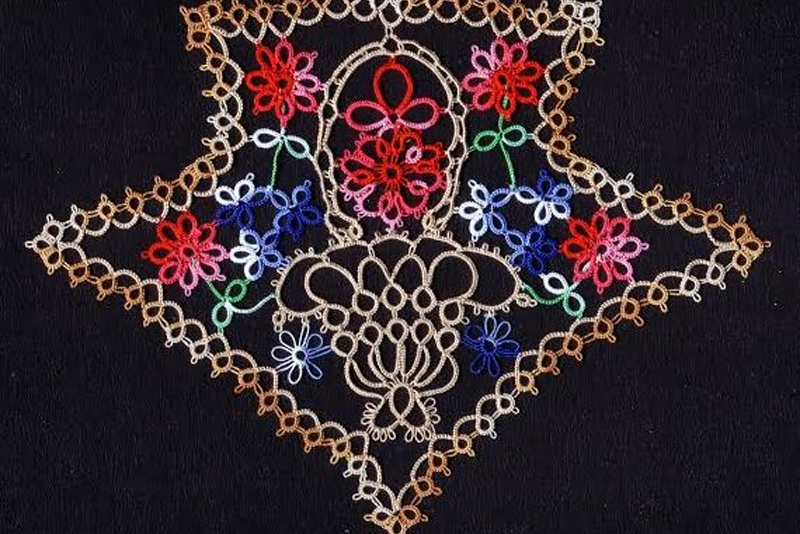After the 2018 Palmetto Tat Days event I received this doily as a gift from Riet Surtel. It immediately intrigued me with its dense outlining of two sections of the doily.

Most often this is seen in commercially produced tatted doilies imported from mainland China. These products are identifiable by the fact that the rows of tatting are joined together with a line of crochet not tatting. This allows one worker to create the inner while another works the outer segment. The third worker crochets the two pieces together for a finished product.

These items are often seen for sale in online auctions and vintage or "antique" shops. They can be very nicely done.

In this detail the over crocheted segment is very visible.

However, newer mass-produced items like this collar are beginning to be well done.
I searched online and contacted other tatters for other samples of this rectangular doily with the dense rows but found few samples that were a match. This sample and the crocheted detail from it were shared with me by Ruby Lane Antiques.


As I studied this rectangular doily further I became convinced that it was not mass-produced; that the dense section was a tatted chain which had the picot tops crocheted over; and, I think the picots were given a twist before they were crocheted. I would welcome any other information on this subject.

But the effect of the over crocheted picot has appeared in tatting for a long time. Some tatters have called it "over tatting." They have been making this dense outline by wrapping double stitches onto the tops of picots. This example is taken from the Priscilla #3 Book pg. 17 a tablecloth edging with grapes and leaves.

Sharon Briggs has some samples of this in brilliant color. Check the 3-dimensional section of the archive. https://www.bellaonline.com/subjects/9354.asp.







